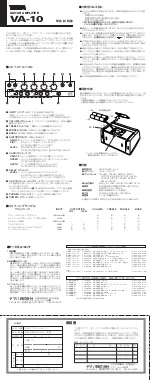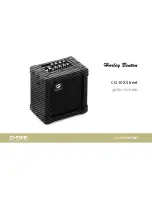
In 1977 I designed and published in Audio Magazine a single ended Class A amplifier using
bipolar followers biased by a constant current source. A considerable number of amateurs
have built the device, rated at 20 watts output, and many have commented on its unique sonic
signature.
Single ended Class A operation is generally less efficient than push-pull Class A. Single
ended Class A amplifiers tend to be even bigger and more expensive than their push-pull
cousins, but they have a more natural transfer curve.
The "purity" of Class A designs has been at issue in the last few years, with "pure" Class A
loosely defined as an idling heat dissipation of more than twice the maximum amplifier output.
For a 100 watt amplifier, this would be 200 watts out of the wall at idle.
Designs that vary the bias against the musical signal will generally have bias currents at or
below the signal level. This is certainly an improvement from the viewpoint of energy
efficiency, but the sound reflects the lesser bias point.
I authored the first patent on the dynamically biased Class A amplifier in 1974, however I have
not used the technique for the last 15 years. The reason is that I found the quality of sound
associated with an efficient Class A operating mode inferior in depth and less liquid at high
frequencies, simply because it operates at reduced bias at low levels. Given the plethora of
cool running “Class A” amplifiers on the market, you might say I opened a Pandora’s box.
Until the output current reaches the single ended bias point of the Aleph 0, it is considered a
single ended Class A amplifier as the bias is provided by a current source attached to the
negative power supply. Beyond the single ended bias point it will operate as a push-pull
amplifier in the conventional sense, leaving Class A at twice the bias point, or about 120 watts
peak into 8 ohms.
A very important consideration in attempting to create an amplifier with a natural characteristic
is the selection of the gain devices. A single ended Class A topology is appropriate, and we
want a characteristic where the positive amplitude is very, very slightly greater than the
negative. For a current gain device, that would mean gain that smoothly increases with
current, and for a tube or field effect device a transconductance that smoothly increases with
current.
Triodes and Mosfets share a useful characteristic: their transconductance tends to increase
with current. Bipolar power devices have a slight gain increase until they hit about an amp or
so, and then they decline at higher currents. In general the use of bipolar in a single ended
Class A circuit is a poor fit.
Another performance advantage shared by Tubes and Fets is the high performance they
deliver in simple Class A circuits. Bipolar designs on the market have between four and
seven gain stages associated with the signal path, but with tubes and Mosfets good objective
specifications are achievable with only 2 or 3 gain devices in the signal path.
Yet a third advantage tubes and Mosfets have over bipolar devices is their greater reliability at
higher temperatures. As noted, single ended power amplifiers dissipate comparatively high
wattages and run hot.
Содержание Aleph 0
Страница 1: ...Pass Laboratories Aleph 0 Owner s Manual ...





























